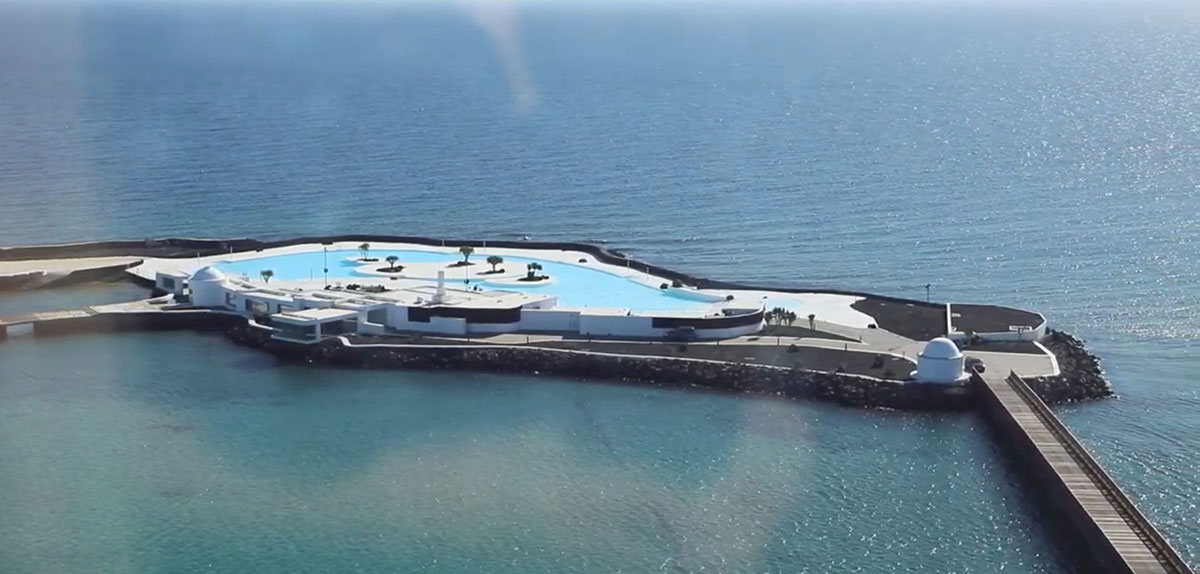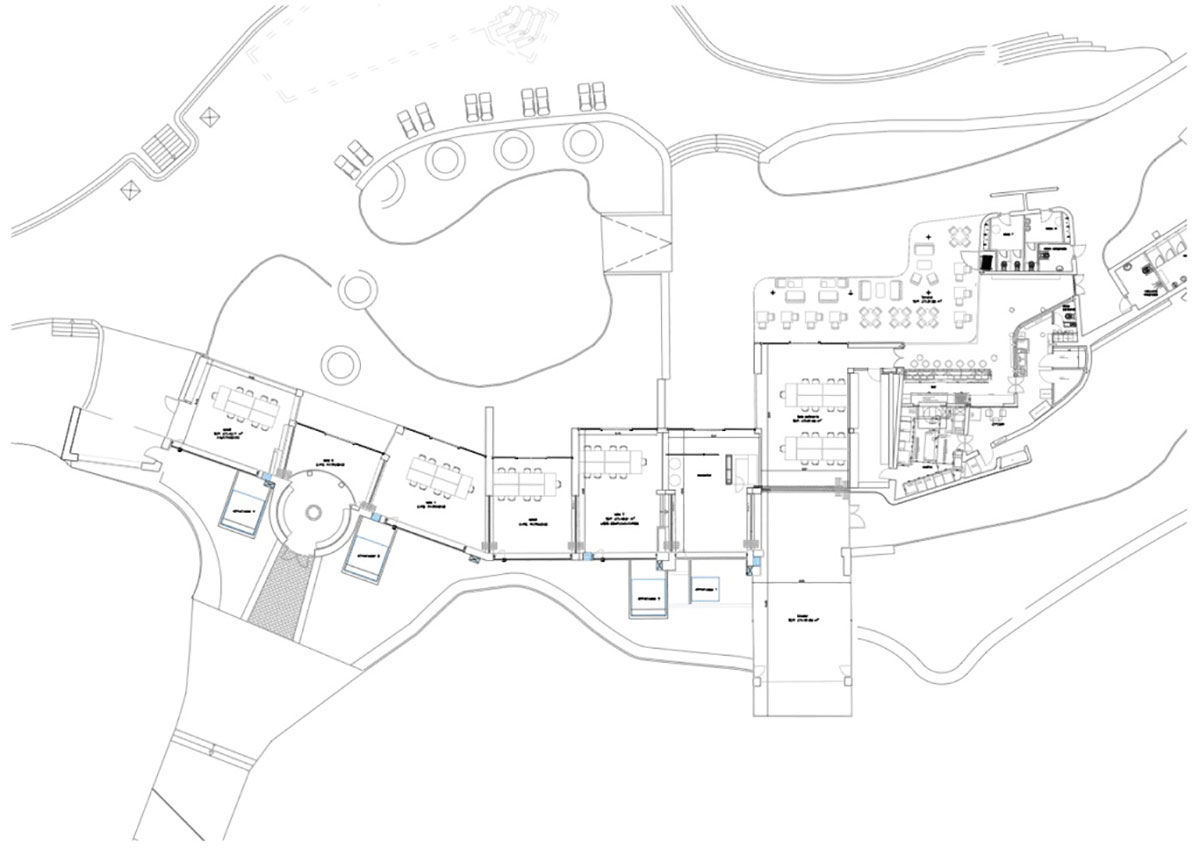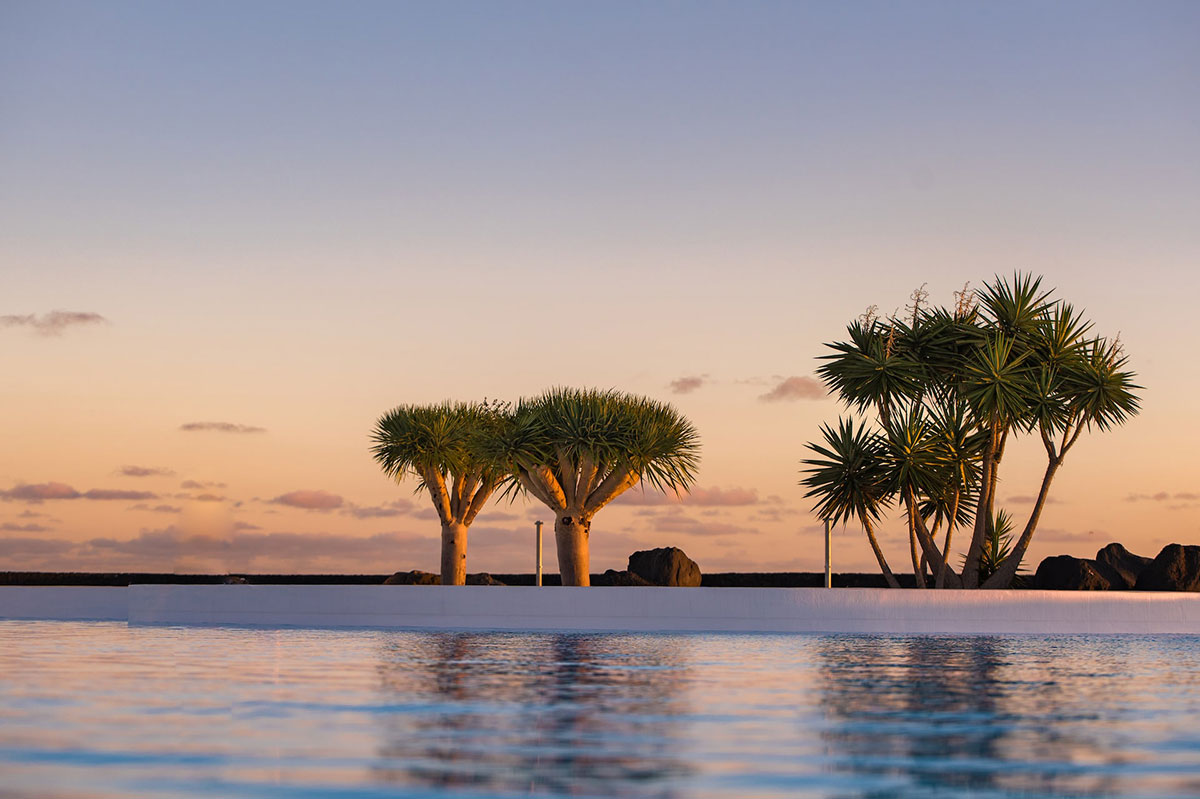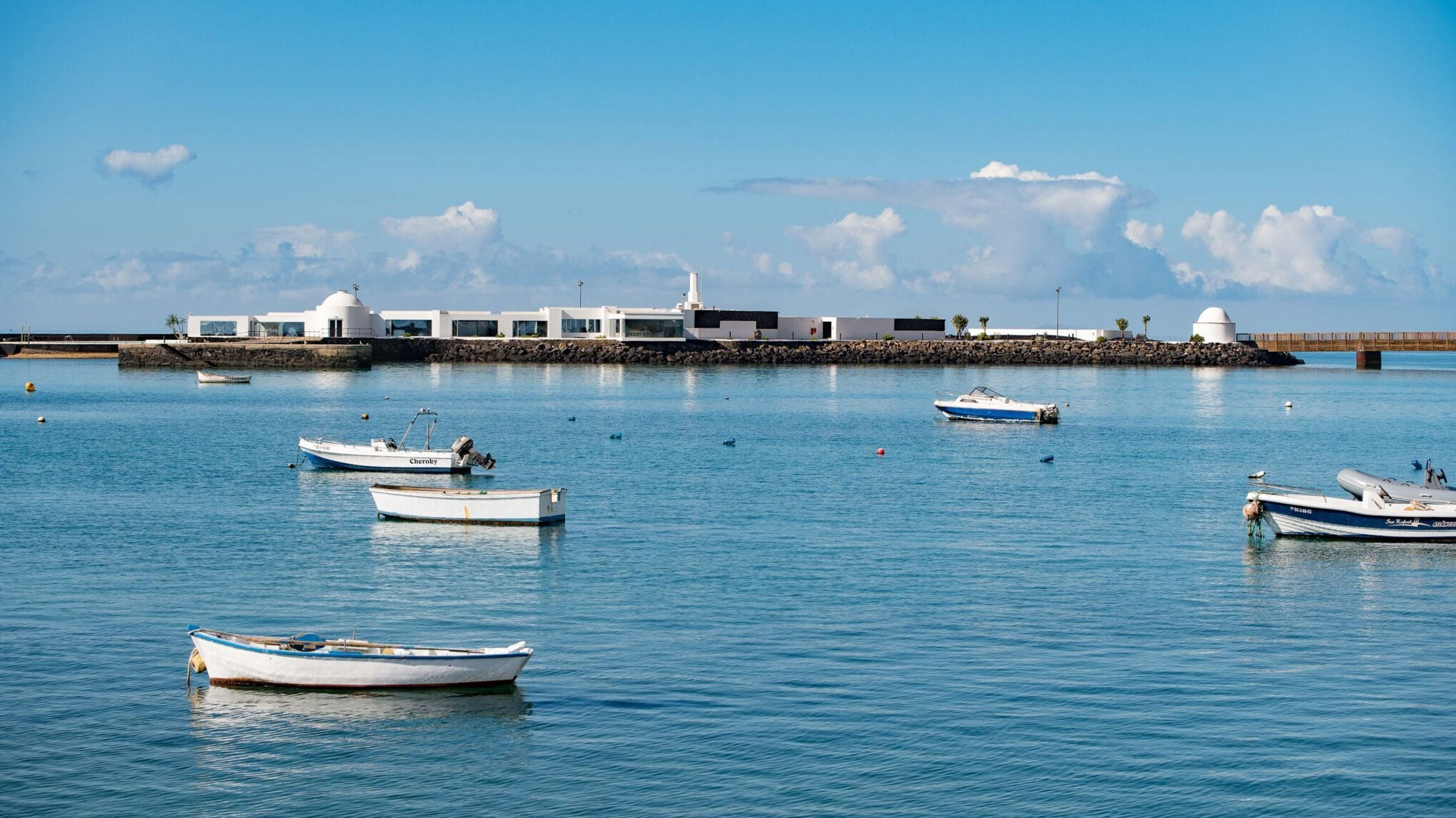The Islet of Fermina is located in the southeast of the island of Lanzarote, in front of its capital, Arrecife (Canary Islands, Spain). One of the earliest historical records of this small island, when it was still known as Islet of Quebrado, dates back to 1918. In that year, the records show that the Marine Command of the Canary Islands granted Fermina García Santana, a shipowner from Coneja (the colloquial name for the inhabitants of Lanzarote), an administrative concession on the island to establish a shipyard. This was the case and several ships were eventually built on the island. Since then, it has been known as Islet of Fermina, although later it also came to be popularly called, unofficially and due to the custom of couples going to the place in search of intimacy, Islote del Amor (Islet of Love).
Well, in 1968, when the islet had fallen into disuse, the tourist company Protucasa (now defunct) commissioned the Lanzarote painter and sculptor César Manrique (1919-1992) to design a tourist complex, complementary to the facilities of the neighbouring Gran Hotel, on the Islet of Fermina. The artist was already known for manifesting in his works a deep concern for the harmonisation of art and nature. In fact, Manrique had already been a successful landscape designer in places such as Los Jameos del Agua, a natural space, a centre for art, culture and tourism in the north of the island, or Lago Martiánez, a large aquatic complex in Puerto de la Cruz, on the Canary Island of Tenerife. This concern for harmony between art, nature and landscaping, as well as for the promotion and conservation of Lanzarote’s cultural and natural heritage, earned him the World Prize for Ecology and Tourism in 1978, awarded to him by the Federal Republic of Germany.



However, the construction of Manrique’s design on Islet of Fermina was left unfinished. After several periods in which they were restarted and then abandoned again, it was finally in 2018 that they were finally resumed at the behest of the Arrecife City Council, the Cabildo of Lanzarote and its agency Centros de Arte, Cultura y Turismo. As a result, the aquatic complex was inaugurated on 28th January and was finally opened to the public. Shortly before its opening, again at the request of the Cabildo of Lanzarote, the space received the qualification of Bien de Interés Cultural (Asset of Cultural Interest), with the category of monument, which guarantees its public protection. So, the capital of Lanzarote, Arrecife, has gained for its citizens and tourists an emblematic space of 14,000 m2, with a 3,600 m2 saltwater swimming pool, solarium, cafeteria overlooking the sea and several multipurpose rooms for holding events of all kinds.
You can enjoy the simplicity and elegance, the beauty of the Isla de Fermina complex in this VIDEO.
Sources: Tourinews, Centros de Arte, Cultura y Turismo (CACT), Cadena Ser, Wikipedia. Images: CACT, Cabildo de Lanzarote and Wikimedia.








